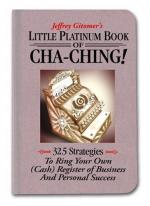|
This section contains 285 words (approx. 1 page at 300 words per page) |
We owe the invention of our modern day cash register to a Dayton, Ohio saloonkeeper, James J. Ritty. Frustrated by dishonest bartenders who helped themselves to saloons profits, Ritty also desired a more efficient method to track sales than haphazard scribbles on scraps of paper. While vacationing in 1879, Ritty was touring the engine room of a transatlantic steamer and noticed a device which counted revolutions of the ships propeller. He realized a similar device could benefit his business. Working along with his brother John, Ritty developed " Ritty's Incorruptible Cash Register". A large device consisting of two rows of keys, a clocklike face with a "minute" hand to record cents, an "hour " hand to record dollars and a bell which signalled the completion of a transaction. The first model did not include any cash drawer controls or any method to maintain permanent records. In the following years, James Ritty and his brother experimented with several improved models, including one which used a paper roll to record transactions. Unable to raise additional capital to continue, Ritty sold the company and patent for $1,000 to the National Manufacturing Company in 1881. In 1884, the name was changed to National Cash Register Company when John Henry Patterson of Ohio became owner. Patterson added an internal printing mechanism which kept a running record of sales and printed a paper sales slip. By 1910, National Cash Register monopolized the market to such an extent, an antitrust suit was filed, although the sentence was later reversed. In 1974, under owner William Anderson, the name was shortened to NCR. With the advent of electronic components and integrated circuits in the 1970s, NCR became completely electronic, branching into computers and 24 hour automated bank teller machines.
|
This section contains 285 words (approx. 1 page at 300 words per page) |


